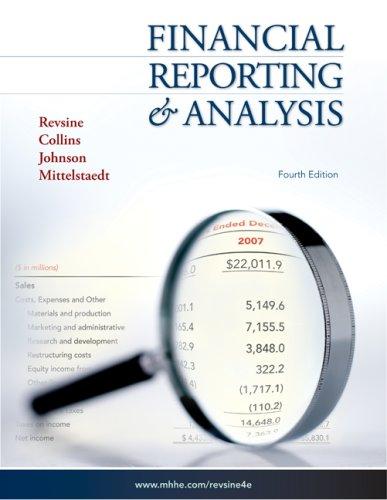Amazon.com, Inc. is the world's leading online retailer selling books, music, DVDs, videos, toys, electronics, software, video
Question:
Amazon.com, Inc. is the world's leading online retailer selling books, music, DVDs, videos, toys, electronics, software, video games, and home improvement products. The following foot- note appeared in the company's 1999 annual report: The company follows the intrinsic value method in accounting for its stock options. Had compensation cost been recognized based on the fair value at the date of grant for options granted in 1999, 1998 and 1997, the pro forma amounts of the Company's net loss and net loss per share for the years ended Decem- ber 31, 1999, 1998 and 1997 would have been as follows:

The fair value for each option granted was estimated at the date of grant using a Black-Scholes option pricing model, assuming no expected dividends and the following weighted average assumptions:

The weighted average fair value of options granted during 1999, 1998 and 1997 was \($43.36,\) \($19.07\) and \($2.07,\) respectively, for options granted with exercise prices at the current fair value of the underlying stock. During 1998 and 1997, some options were granted with exercise prices that were below the current fair value of the underlying stock. The weighted average fair value of options granted with exercise prices below the current fair value of the underlying stock during 1998 and 1997 was \($4.61\) and \($0.55,\) respectively.
Compensation expense that is recognized in providing pro forma disclosures might not be representative of the effects on pro forma earnings for future years because SFAS No. 123 does not apply to stock option grants made prior to 1995. :
Required:
1. Why do you think Amazon.com uses the intrinsic value (APB Opinion No. 25) method of accounting for employee stock options rather than the fair value method allowed in SEAS No. 123?
2. The footnote states that, during 1998 and 1997, some options were granted with exercise prices below the grant-date market price of Amazon.com stock. What impact (if any) did these awards have on compensation expense?
3. The average exercise price for employee stock options granted in 1999 was \($63.60.\) Suppose that Amazon.com stock now trades at only \($30\) per share. Are the options worthless?
4. Some companies “reprice” their stock options when the exercise price gets too high. As a shareholder, do you favor repricing the Amazon.com options so that the exercise price is \($30?\) Why or why not?
Step by Step Answer:






